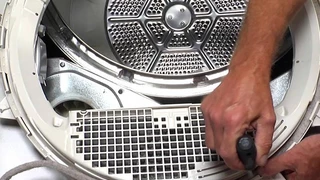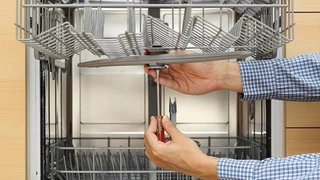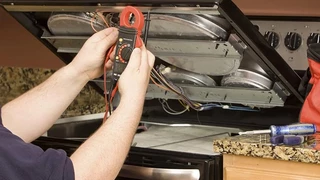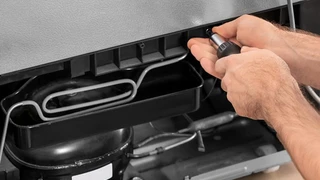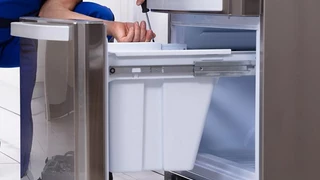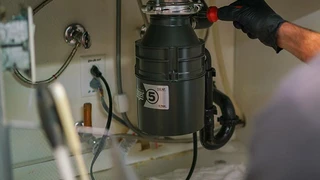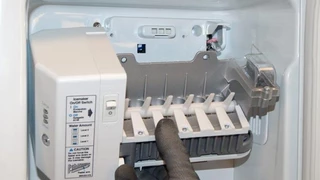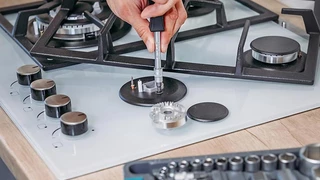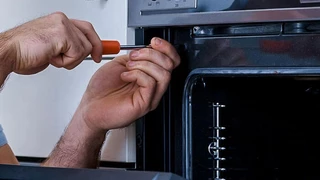Diagnosing Noisy Dryer Issues: Solutions and Fixes
Noisy dryers can be a frustrating and disruptive problem for homeowners. Not only do they create an unpleasant and distracting sound, but they can also indicate underlying issues that may affect the functionality and longevity of the appliance. In this comprehensive guide, we discuss the common causes of noisy dryers, including worn drum bearings or glides, loose or damaged blower wheels, worn-out idler pulleys or rollers, faulty drive belts, and foreign objects in the drum or blower housing. We also provide practical solutions and fixes for these issues, as well as tips on preventative maintenance and noise prevention.
Noisy dryers can be a frustrating and disruptive problem for homeowners. Not only do they create an unpleasant and distracting sound, but they can also indicate underlying issues that may affect the functionality and longevity of the appliance. It is essential to address noisy dryer issues promptly to prevent further damage and ensure optimal performance.
We will discuss the common causes of noisy dryers, including worn drum bearings or glides, loose or damaged blower wheels, worn-out idler pulleys or rollers, faulty drive belts, and foreign objects in the drum or blower housing. We will also provide troubleshooting techniques for identifying the type of noise and diagnosing the underlying problem.
We hope that this information will be helpful to homeowners in Chicago and its suburbs who are experiencing noisy dryer issues and are seeking professional repair services.
Introduction: Understanding Noisy Dryer Issues
Noisy dryers can be caused by a variety of issues, ranging from worn-out components to foreign objects trapped in the drum or blower housing. In this section, we will provide an overview of the problem of noisy dryers and its impact on user experience and appliance functionality. We will also highlight the importance of addressing these problems promptly to prevent further damage.
Common Causes of Noisy Dryers
There are several common causes of noisy dryers, including worn drum bearings or glides, loose or damaged blower wheels, worn-out idler pulleys or rollers, faulty drive belts, and foreign objects in the drum or blower housing. Let’s take a closer look at each of these issues.
Worn Drum Bearings or Glides in Dryers
The drum bearings or glides support the drum and allow it to rotate smoothly. Over time, these parts can wear out, causing the drum to rub against other components and create a loud noise.
Loose or Damaged Blower Wheel in Dryers
The blower wheel circulates air through the dryer and over the heating element. If the blower wheel becomes loose or damaged, it can create a loud noise as it spins.
Worn Out Idler Pulley or Rollers in Dryers
The idler pulley and rollers help to maintain tension on the drive belt and support the drum. If these parts become worn out, they can cause the belt to slip and create a loud noise.
Faulty Drive Belt in Dryers
The drive belt connects the motor to the drum and allows it to rotate. If the belt becomes worn or damaged, it can slip off the pulleys and create a loud noise.
Foreign Objects in the Drum or Blower Housing of Dryers
Sometimes, foreign objects such as coins, buttons, or paper clips can become trapped in the drum or blower housing. These objects can create a loud noise as they are tossed around during the drying cycle.
Diagnosing the Problem: Uncovering the Mystery
If your dryer is making loud or unusual noises, it is essential to diagnose the problem promptly to prevent further damage and ensure optimal performance. In this section, we will discuss how to identify the type of noise, troubleshoot the issue, and determine the tools and equipment needed for diagnosis.
Identifying the Type of Noise in Dryers
The first step in diagnosing a noisy dryer is to identify the type of noise it is making. Different types of noises can indicate specific underlying issues. For example, a grinding noise may indicate worn drum bearings or glides, while a rattling noise may suggest a loose or damaged blower wheel. Other common types of dryer noises include rumbling, squeaking, and thumping.
To identify the type of noise your dryer is making, listen carefully as it operates and try to determine the source of the sound. You may also want to run the dryer with an empty drum to eliminate any potential interference from clothing or other items.
Troubleshooting Techniques for Each Type of Noise in Dryers
Once you have identified the type of noise your dryer is making, you can use specific troubleshooting techniques to diagnose the underlying issue. For example, if your dryer is making a grinding noise, you may want to inspect the drum bearings or glides for signs of wear or damage. If your dryer is making a rattling noise, you may want to check the blower wheel for looseness or damage.
Other troubleshooting techniques may include checking for foreign objects in the drum or blower housing, inspecting the drive belt for wear or damage, and testing the idler pulley and rollers for proper tension and alignment.
Tools and Equipment Needed for Diagnosis in Dryers
To diagnose a noisy dryer, you will need some basic tools and equipment. These may include a screwdriver or nut driver to remove panels and access internal components, a flashlight to illuminate dark areas, and a multimeter to test electrical components.
In some cases, you may also need specialized tools such as a drum bearing puller or blower wheel wrench. It is essential to consult your dryer’s owner’s manual or a professional technician for guidance on the specific tools and equipment needed for your particular model.
Solutions and Fixes: Restoring Harmony to Your Dryer
Once you have diagnosed the problem with your noisy dryer, it’s time to take action and restore harmony to your appliance. In this section, we will discuss common solutions and fixes for noisy dryers, including replacing worn drum bearings or glides, tightening or replacing the blower wheel, replacing the idler pulley or rollers, replacing the drive belt, and removing foreign objects from the drum or blower housing.
Replacing Worn Drum Bearings or Glides in Dryers
If your dryer is making a grinding noise due to worn drum bearings or glides, the solution is to replace these parts. This can be a complex repair that requires disassembling the dryer and removing the drum. It is essential to consult your dryer’s owner’s manual or a professional technician for guidance on this repair.
Tightening or Replacing the Blower Wheel in Dryers
If your dryer is making a rattling noise due to a loose or damaged blower wheel, the solution is to tighten or replace the wheel. This can typically be done by accessing the blower housing and tightening the retaining nut or replacing the wheel if it is damaged. Again, it is essential to consult your dryer’s owner’s manual or a professional technician for guidance on this repair.
Replacing the Idler Pulley or Rollers in Dryers
If your dryer is making a loud noise due to worn-out idler pulley or rollers, the solution is to replace these parts. This can typically be done by accessing the idler pulley or rollers and replacing them with new parts. It is essential to consult your dryer’s owner’s manual or a professional technician for guidance on this repair.
Replacing the Drive Belt in Dryers
If your dryer is making a loud noise due to a faulty drive belt, the solution is to replace the belt. This can typically be done by accessing the drive belt and replacing it with a new one. It is essential to consult your dryer’s owner’s manual or a professional technician for guidance on this repair.
Removing Foreign Objects from the Drum or Blower Housing of Dryers
If your dryer is making a loud noise due to foreign objects trapped in the drum or blower housing, such as coins, buttons, paper clips, or other small items, then you need to remove these objects. This can typically be done by accessing the drum or blower housing and carefully removing any foreign objects that are present.
Preventative Maintenance and Noise Prevention Tips: Keeping Your Dryer Running Smoothly
Preventative maintenance is essential to keeping your dryer running smoothly and avoiding noisy issues. In this section, we will discuss some practical tips for maintaining your dryer and preventing noise, including regular cleaning of the lint filter and dryer vent, proper loading of the dryer, regular inspection and replacement of worn parts, and proper installation to reduce vibrations.
Regular Cleaning of Lint Filter and Dryer Vent
One of the most important preventative maintenance tasks for your dryer is to regularly clean the lint filter and dryer vent. This helps to ensure proper airflow and prevent overheating, which can cause noisy operation and reduce the efficiency of your appliance. To clean the lint filter, simply remove it from the dryer and use a brush or your hand to remove any lint or debris. The dryer vent should also be cleaned periodically to remove any buildup of lint or debris.
Proper Loading of Dryer to Avoid Overloading and Strain on Parts
Another important preventative maintenance tip is to properly load your dryer to avoid overloading and strain on parts. Overloading your dryer can cause excessive wear on components such as the drum bearings or glides, leading to noisy operation and reduced efficiency. To avoid overloading, follow the manufacturer’s recommendations for maximum load size and distribute items evenly in the drum.
Regular Inspection and Replacement of Worn Parts
Regular inspection and replacement of worn parts is also essential to maintaining your dryer and preventing noise. Over time, components such as the drum bearings or glides, idler pulley or rollers, drive belt, and blower wheel can become worn or damaged due to regular use. By inspecting these parts periodically and replacing them as needed, you can help prevent noisy operation and ensure optimal performance.
Proper Dryer Installation to Reduce Vibrations
Proper installation of your dryer can also help reduce vibrations and prevent noisy operation. This includes leveling the appliance and securing it in place to prevent excessive movement during operation. If your dryer is not level or is not securely installed, it can vibrate excessively, causing noisy operation and potentially damaging components.
Safety Considerations: Protecting Yourself and Your Dryer
When diagnosing and repairing noisy dryer issues, it is essential to take safety precautions to protect yourself and your appliance. In this section, we will discuss the importance of safety precautions such as unplugging the appliance and wearing protective gear, as well as reminders to consult professional technicians for complex or potentially hazardous repairs.
Importance of Safety Precautions When Diagnosing and Repairing Noisy Dryer Issues
Before attempting to diagnose or repair a noisy dryer, it is essential to take appropriate safety precautions. This includes unplugging the appliance to prevent electrical shock and wearing protective gear such as gloves and safety glasses to protect yourself from sharp edges or debris.
It is also important to use caution when handling internal components, as they may be hot or sharp. If you are unsure about how to safely diagnose or repair a noisy dryer issue, it is best to consult a professional technician for guidance.
Reminders to Consult Professional Technicians for Complex or Potentially Hazardous Repairs
While some noisy dryer issues can be diagnosed and repaired by homeowners with basic technical skills, others may require the expertise of a professional technician. Complex or potentially hazardous repairs, such as replacing electrical components or working with gas lines, should always be performed by a qualified professional.
If you are unsure about how to diagnose or repair a noisy dryer issue, it is best to consult a professional technician for guidance. Not only will this ensure that the repair is performed safely and correctly, but it can also help prevent further damage to your appliance.
By following the information and guidance provided in this article, you can ensure that your dryer continues to operate efficiently and effectively for years to come.
We hope that this information has been helpful to homeowners in Chicago and its suburbs who are experiencing noisy dryer issues and are seeking professional repair services.

